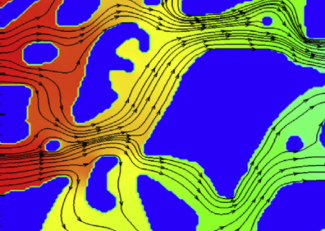
The consortium brings together oil and gas industry partners and UH faculty and students to work on real work problems that improve student education, research opportunities, and career development. Shale and carbonate rocks exhibit complex geological features at multiple length scales. A common element of these rocks is the heterogeneity of pore size distribution and the distribution of pre-existing fractures and vugs in carbonate rocks. Advances in imaging technologies provide a unique opportunity for using numerical characterization of reservoir properties based on digital cores. Such digital cores are developed by digitally reconstructing three-dimensional pore space based on high-resolution images of core samples. The consortium focuses on developing integrated numerical simulation workflows that efficiently characterize shale and carbonate reservoir properties by coupling molecular simulations and lattice Bolzmann simulations at different length scale on digital cores. This is realized by integrating different computer software programs in a high-performance computing environment. The simulation platform in the consortium includes:
- Coarse-grained modeling of organic matter molecules,
- Nonlocal approach for reducing force calculation in molecular dynamic simulations, and
- Multiphase multicomponent Lattice Bolzmann Method (LBM) simulation at Representative Elementary Volume or REV scale.